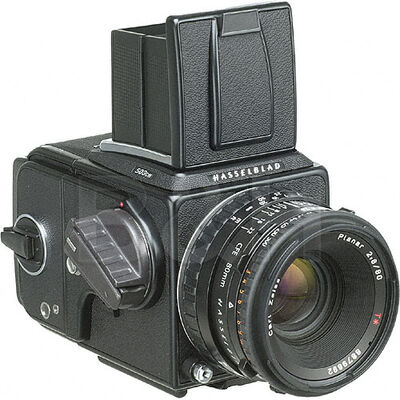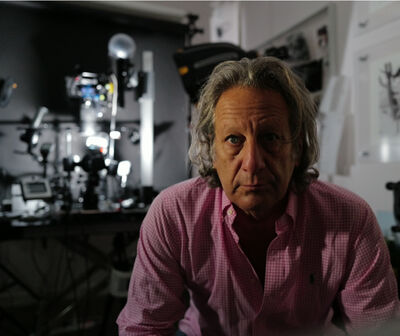Yes, there is a difference.
Feb 18, 2024 13:52:07 #
CHG_CANON wrote:
Given the deference so many of the community regularly give to the community's group-think on so many topics, why this lone resistance to instead take the word of self-interested engineers at various companies over the independent assessments from the UHH community?
Maybe the engineers really know something as opposed to assume something. Many assumptions have become “fact” in some people’s minds because they have been quoted so often by supposedly respected members of the community who have originally assumed something. We all know what assume really means.
Feb 18, 2024 14:45:51 #
What your camera captures won’t be what your eyes saw - with post processing you can get it reasonably close (if you want to) - a camera is a box with a hole in it - it is in no way magical
Feb 18, 2024 19:47:09 #
Mwilliamsphotography
Loc: Royal Oak Michigan & Palm Harbor Florida
BebuLamar wrote:
Generally colors of a logo would be specified with Pantone numbers.
Yep. As an Art Director and Designer it is one of the first things you learn.
I still produce work for major clients and 4 color printing is done in CMYK color space and specified for the specific paper to be used.
When doing color specific product photography like car interiors for catalog selection, color matching is done with an exact Color Standard plaque ... which is also used as a final check during the printers' proofs to make sure it is color correct.
Feb 19, 2024 13:41:27 #
JBGLADSTONE
Loc: Oregon
Thank you for your time and explaining ON1.
I had forgotten about Canon's DPP4.
Now, I will compare both to see if I can tell a difference in colors.
I had forgotten about Canon's DPP4.
Now, I will compare both to see if I can tell a difference in colors.
Feb 19, 2024 16:01:55 #
JBGLADSTONE wrote:
Thank you for your time and explaining ON1.
I had forgotten about Canon's DPP4.
Now, I will compare both to see if I can tell a difference in colors.
I had forgotten about Canon's DPP4.
Now, I will compare both to see if I can tell a difference in colors.
Thank you for stopping by. You will not see a marked difference in the monitor but you will in your prints. On-1 told me that their colors are going to be different to those of a Nikon or Olympus files, once again, more noticeable when printing. While softwares like Photoshop, Affinity Photo, On-1 and Lightroom develop their RAW data editing designed by their own engineers, Nikon and Olympus and I am not familiar with Fuji, Sony or Canon, use codes that they do not make available to anyone else. Those codes are specifically designed for their files.
I have said that if anyone is using a software that is not proprietary and is happy with the results his or her best bet is to stick to what is been used.
Feb 19, 2024 16:48:32 #
camerapapi wrote:
You will not see a marked difference in the monitor but you will in your prints. On-1 told me that their colors are going to be different to those of a Nikon or Olympus files, once again, more noticeable when printing.
I would look for another source of information. Whoever you spoke with at ON-1 was blowing smoke.
If you can't see a difference on your monitor, you should not see a difference in a print.
Once the raw file is converted to an image using a specific color space like sRGB, the printing process will not treat an image differently based on manufacturer. In fact, if you remove the identifying information in the EXIF data, the printer will never know where it came from.
You might see a difference when printing if you use the wrong ICC profile. That matches a particular combination of printer and paper.
Feb 19, 2024 17:09:33 #
selmslie wrote:
I would look for another source of information. W... (show quote)
William / camerapapi - please read and understand the unvarnished TRUTH of all the points above. Until you do understand these summary facts of the matter, you'll just wander around believing the unbelievable ....
twb930s - the same comment goes to you too.
Feb 19, 2024 20:29:57 #
Gentlemen, don't you think it is time to stop the nonsense. I have said in more than one occasion that whoever is happy with what he or she is doing right now to keep on doing it.
Paul keep on doing what you are doing but for me, I will keep on using proprietary software. I am 87 years old, old yes but stupid not. What is unbelievable when it comes to printing?
Selmslie, On-1 is there to sell, don't you think that the answer at On-1 should have been YES, you will get the original Nikon colors? They simply were honest. I agree, what you see in a calibrated monitor should be what we will see in a print. You are happy with On-1 so just keep on using it.
I admit I am not an expert when it comes to color. I never talked to a printer to give me the colors I want. People over here seem to know more about color reproduction than Nikon, good for them.
As far as I am concerned I will not keep on discussing color reproduction.
Paul keep on doing what you are doing but for me, I will keep on using proprietary software. I am 87 years old, old yes but stupid not. What is unbelievable when it comes to printing?
Selmslie, On-1 is there to sell, don't you think that the answer at On-1 should have been YES, you will get the original Nikon colors? They simply were honest. I agree, what you see in a calibrated monitor should be what we will see in a print. You are happy with On-1 so just keep on using it.
I admit I am not an expert when it comes to color. I never talked to a printer to give me the colors I want. People over here seem to know more about color reproduction than Nikon, good for them.
As far as I am concerned I will not keep on discussing color reproduction.
Feb 20, 2024 07:33:42 #
camerapapi wrote:
Selmslie, On-1 is there to sell, don't you think that the answer at On-1 should have been YES, you will get the original Nikon colors? They simply were honest.
I don't use ON1. I prefer Capture One.
I have tried the alternatives and I am happy to pay a premium for one that best meets my needs.
All of my displays are calibrated but they are stable enough that I only need to recalibrate every three months.
Feb 20, 2024 13:44:51 #
billnikon wrote:
I prefer to set my own colors with photoshop. I rarely use the colors from the original RAW image.
That would be boring indeed.
That would be boring indeed.


Feb 21, 2024 13:48:24 #
I simply stuff. Here is why I only shoot RAW. Some will argue with me, but I really don’t care. This is what I believe and it seems to work for me well.
JPEGs are 8 bit lossy format. This means that there are 256 tonal values per channel (compared to 4,096 tonal values of RAW images) every time you open, work with and re-save a jpeg, the jpeg compression algorithm re-averages the data on an 8x8 pixel grid comparing it to the upper left pixel, instead of the full data per pixel. It provides a smaller file, but that’s lossy.
Raw (as are tiffs) is a lossless 14 bit file format. There are 4,096 tonal values per channel. Your raw file is un-interpreted data set of exactly what your ccd sees. Compared to a processed image performed by the computer in your camera.
The only time I save as a jpeg is when I am posting to the web. And then, I reduce the image quality to protect my photos from being used by others without permission.
I hope this is helpful.
JPEGs are 8 bit lossy format. This means that there are 256 tonal values per channel (compared to 4,096 tonal values of RAW images) every time you open, work with and re-save a jpeg, the jpeg compression algorithm re-averages the data on an 8x8 pixel grid comparing it to the upper left pixel, instead of the full data per pixel. It provides a smaller file, but that’s lossy.
Raw (as are tiffs) is a lossless 14 bit file format. There are 4,096 tonal values per channel. Your raw file is un-interpreted data set of exactly what your ccd sees. Compared to a processed image performed by the computer in your camera.
The only time I save as a jpeg is when I am posting to the web. And then, I reduce the image quality to protect my photos from being used by others without permission.
I hope this is helpful.
Feb 21, 2024 16:18:07 #
Robertl594 wrote:
JPEGs are 8 bit lossy format. This means that there are 256 tonal values per channel (compared to 4,096 tonal values of RAW images) ...
You are on the right track but your numbers are not right.
A color JPEG does indeed contain 256 possible tonal values (2^8) values for each channel but since there are three channels that translates to 16,777,216 color values (2^24). The same is true for an 8-bit TIFF except that it is not compressed.
But a TIFF can also be 16-bit with 2^16=65,536 values per channel. If a TIFF contains three color channels it means that there are 48 bits in a pixel and 2^48=281,474,496,710,656 possible color values.
The odds of being able to distinguish the difference between two colors that are very close in value is practically zero.
A 14-bit raw file has no colors in the recorded pixel values, only luminance. That's 2^14=16,384 possible tonal values. But in this case, values lower than about 64 are almost impossible to distinguish from black because the raw values follow an arithmetic sequence whereas the image values represent a logarithmic sequence. The also means that the highest values are also almost impossible to distinguish in the raw file but you can make them out once they get turned into logarithms. Nevertheless, it's almost impossible to detect color in the darkest or brightest tones which just look black or white.
What makes the JPEG go bad is that all of the numbers are stored as integers. When you open a JPPG to edit it, the 8-bit values get converted to 16- or 32-bit values in the computer. They can be treated like floating point values during editing. You can manipulate the colors and tones without seeing any damage. But when you finally save the results, they all get returned to their 8-bit representation, in effect, rounding the values off. You may not notice the damage until you reopen the JPEG and do more tone and color editing and save again. Pretty soon you will start to see banding. It's the rounding, not the JPEG compression, that does the damage.
The remedy is to always start from the raw file or the same original JPEG or TIFF rendition of the image. Never reopen an edited image to do additional editing.
Feb 21, 2024 16:25:09 #
selmslie wrote:
You are on the right track but your numbers are no... (show quote)
Great explanation. Thank you for clarifying. This is important information.
If you want to reply, then register here. Registration is free and your account is created instantly, so you can post right away.






